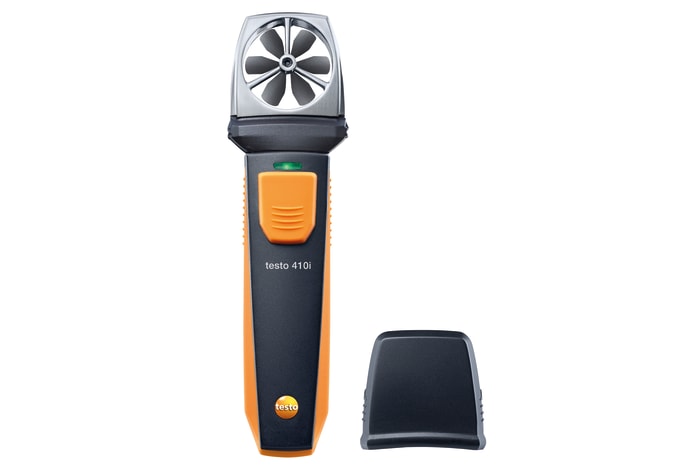All You Required to Learn About Anemometers: Just How They Work, Why They Matter, and Where to Use Them
Anemometers, however frequently ignored in the world of scientific instruments, play a crucial duty in numerous areas, offering useful understandings into wind speed and air flow patterns. As we dive into the details of anemometer technology, we will discover the inner functions of these tools, their value, and the key factors to consider when selecting the best anemometer for particular applications.

Anemometer Fundamentals
A vital instrument used to measure wind speed and direction, the anemometer plays an essential role in weather forecasting and different markets. An anemometer usually consists of three or 4 mugs that turn in the wind, a vane that points into the wind, and sensors to track the rotations or motions. By calculating the turnings or motions over a particular time period, the anemometer can identify wind speed. The vane aids figure out wind direction by aiming right into the wind, supplying important information for weather projecting, aviation, maritime operations, ecological surveillance, and wind energy applications.
There are different kinds of anemometers available, consisting of cup anemometers, vane anemometers, hot-wire anemometers, and sonic anemometers, each with its special features and applications. Mug anemometers are frequently made use of for standard wind speed dimensions, while vane anemometers are chosen for directional dimensions. Hot-wire anemometers appropriate for low airspeeds, and sonic anemometers are optimal for high-precision dimensions in research and industrial setups. Comprehending the essentials of anemometers is vital for exact wind information collection and analysis throughout various industries.
Concepts of Anemometer Procedure
Building on the foundational understanding of anemometer fundamentals, the principles of anemometer procedure clarify the technicians behind wind rate and instructions dimensions. Anemometers operate the principle of air flow affecting a sensing unit, creating it to revolve. Mug anemometers, for example, have 3 or even more mugs that capture the wind, creating them to rotate quicker as the wind rate increases. The rotation speed is then converted into a wind rate measurement. Vane anemometers, on the various other hand, make use of a tail or a probe that straightens itself with the wind direction, supplying a dimension of wind instructions based on the positioning of the sensing unit. Hot-wire anemometers rely upon a heated cord that cools down as wind passes over it, with the rate of cooling down figuring out the wind speed. Ultrasonic anemometers action wind rate and instructions by analyzing the moment it considers ultrasonic signals to take a trip between transducers. Comprehending these concepts is important for reputable and accurate wind measurements in numerous applications.
Importance of Anemometers
Anemometers play an essential function in determining wind speed and instructions, providing important data for weather condition forecasting, climate research studies, environmental monitoring, and air travel procedures. Meteorologists depend on anemometers to collect exact wind information, helping them understand weather patterns, predict tornados, and problem timely warnings to the public. Wind ranch operators utilize anemometers to examine wind conditions and take full advantage of electricity production from wind generators.
Applications Throughout Numerous Industries
Applications of anemometers extend across varied markets, showcasing their versatility and energy past meteorology. In the renewable power field, anemometers play an essential duty in examining wind problems for wind farm placements, making certain optimal energy manufacturing. Industries like building and mining make use of anemometers to keep an eye on wind speeds, critical for safety and security procedures, especially when operating at elevations or in open-pit mines where strong winds can posture threats. Anemometers are likewise indispensable in the air travel sector, assisting pilots in understanding airspeed and wind instructions for secure take-offs and landings. The maritime field take advantage of anemometers for ship navigation, aiding seafarers anticipate climate changes and change paths accordingly. In farming, anemometers aid farmers in handling plant spraying by supplying real-time data on wind speed to avoid drift. Anemometers find applications in HVAC systems to enhance air movement and enhance energy performance in buildings. The varied usage instances of anemometers underscore their relevance throughout different industries, highlighting their indispensable duty in boosting operational safety and efficiency (anemometer).

Choosing the Right Anemometer for Your Requirements
Picking the appropriate anemometer tailored to your certain needs is important for getting precise wind speed and instructions dimensions. When picking an anemometer, consider aspects such as the desired application, called for measurement range, ecological problems, and desired features. For general objectives, a mug anemometer appropriates for gauging wind speed, while a vane anemometer supplies wind direction data. Hot-wire anemometers are suitable for reduced airspeed measurements, and ultrasonic anemometers supply high precision and durability.

Verdict
To conclude, anemometers play a critical function in determining wind speed and direction across numerous sectors. Recognizing the principles of anemometer procedure is essential for selecting the best tool for details requirements. From weather forecasting to aviation, anemometers are vital devices for making sure and collecting exact data security in different applications. It is essential to take into consideration the relevance of anemometers in order to make informed choices when choosing the web most appropriate tool for determining wind conditions.
There are different kinds of anemometers readily available, including cup anemometers, vane anemometers, hot-wire anemometers, and sonic anemometers, each with its special attributes and applications. Mug anemometers are commonly utilized for basic wind speed dimensions, while vane anemometers are preferred for directional dimensions. Hot-wire anemometers are ideal for reduced airspeeds, and sonic anemometers are ideal for high-precision measurements in study and industrial settings.Building on the foundational understanding of anemometer fundamentals, the principles of anemometer operation illuminate the auto mechanics behind wind rate and instructions measurements. For basic objectives, a mug anemometer is ideal for gauging wind speed, while a vane anemometer supplies wind you could look here instructions information.
Comments on “How to Keep and Look After Your Anemometer to Make Certain Long Life”